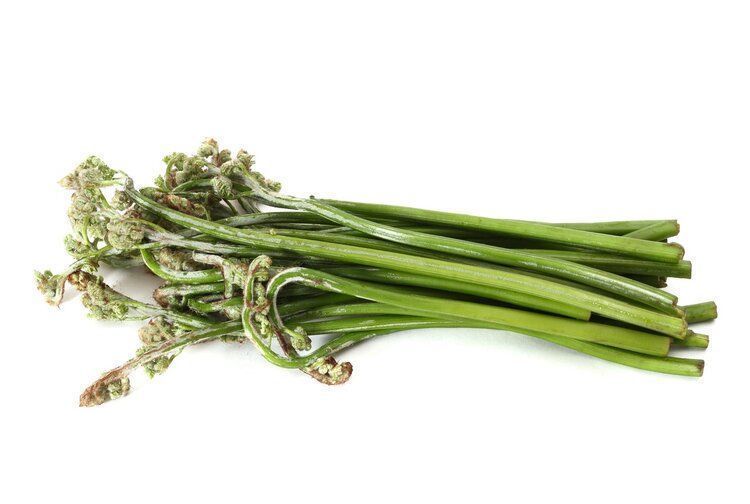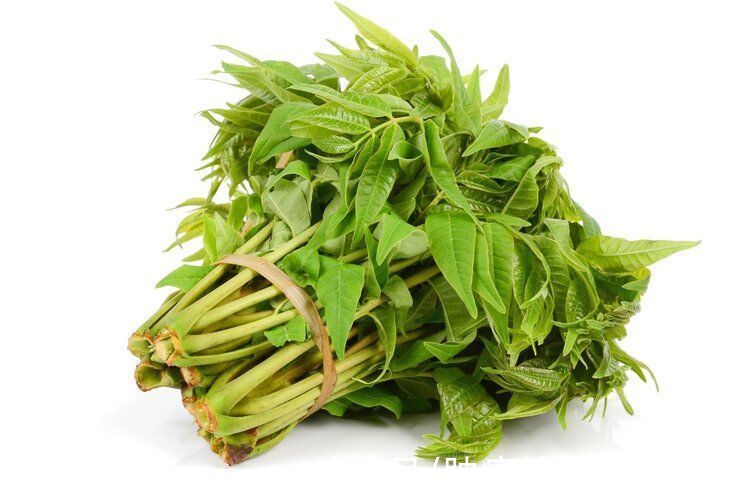“It’s a good season of the year, bracken grows so well, I’ll make more tonight.” Aunt Zhao said with a vegetable basket.
“Sister Zhao, what are you doing with so many bracken?” asked the neighbor’s Aunt Wang.
“What else can bracken do, cook.” Aunt Zhao replied with a smile.
“Oh, please don’t. Experts said that bracken is a carcinogen. You can’t eat this stuff.” Aunt Wang warned.
The two went home after talking for a while. Aunt Zhao didn’t believe what Aunt Wang said, but she became worried when she thought of cancer, so she checked online. It doesn’t matter if you don’t check it. There is actually a lot of information on the Internet saying that bracken is carcinogenic, as well as other vegetables that are often eaten. This makes Aunt Zhao nervous, and now the mood for cooking is gone.
Bracken, also known as dragon head vegetable, is known as “mountain treasure” in the folk because of its rich nutrition and delicious taste , “King of Mountain Vegetables” and other reputations, its tender leaves contain a variety of nutrients, such as: vitamins, proteins, carbohydrates, insoluble dietary fiber, trace elements (calcium, phosphorus, potassium , magnesium, iron, zinc, copper, manganese, etc.), biologically active ingredients (polysaccharides, flavonoids), etc.
But in recent years, the saying that “bracken can cause cancer” has been widely circulated, which makes many friends who love bracken dare not speak.
Is bracken carcinogenic, and is it harmful to the human body? The answer to this question may have to be found in science.

1. Eating bracken 100% will cause cancer? Experts come to refute the rumors
The International Agency for Research on Cancer under the World Health OrganizationBracken is classified as a 2B carcinogen< span>, Bracken contained in proto-fernin is listed as 3 types of carcinogens. As the saying goes: the official “conviction” is the most deadly, and the news that bracken eats can cause cancer spread.
In the past news dissemination, the carcinogenicity of bracken is mainly related to the carcinogenic components it contains, such as: Alkaline alcohol compounds, etc. Among them, protofernoid is the most mentioned and the key component that plays a carcinogenic role. The dienone compounds produced by its hydrolysis are highly carcinogenic and will change the DNA of the ingested person. , is a genotoxic carcinogen.
Although it seems that the conclusion of “Bracken carcinogens” is a certainty, we must make it clear that the World Health Organization’s classification of 2B carcinogens does not mean that exposure to 100% carcinogenic, but means that the carcinogenicity has been confirmed in animal studies, but there is no clear evidence to support the effect on humans, and the 3 types of carcinogens represent that the substance is harmful to animals and humans. There is no clear evidence of carcinogenic effects.

Studies found that protofernin wants to achieve carcinogenic effect, then Dose and exposure frequency are direct risk factors, that is to say, the more times the human body is exposed to protoferrin and the higher the dose, the greater the risk of cancer. In addition, the occurrence of cancer itself may also be related to individual differences, genetic factors, It is related to multiple factors such as the environment, health status, and lifestyle. Therefore, the statement that the percentage of people who eat bracken will get cancer is obviously untenable.
Huang Ke, a professor at the Department of Vegetables, School of Horticulture and Landscape Architecture, Hunan Agricultural University, also said: in the dry matter of bracken, the composition of protoferin only accounts for 0.1-0.6%. Judging from the research results, a person who eats enough 0.5-3.5 kg bracken per day for 20 years may be at risk of developing cancer, so there is no problem with ordinary people eating in moderation.
Professor Huang also reminded the public that the harmful substances contained in bracken mentioned by people in the past are all water-soluble compounds. Then Bracken the bracken with boiling water several times before eating bracken, and the remaining water should be drained, not edible, and try to avoid eating bracken in cold dishes.
Second, wild vegetables are highly nutritious and have better health effects than cultivated vegetables?
In life, the reason why people pay so much attention to the news about bracken cancer and wild vegetables is because people generally believe that wild vegetables have higher nutritional value and are more natural than cultivated vegetables , safe, but this is not the case.
Due to the different growing environments of wild vegetables and cultivated vegetables, the ingredients of the two vegetables are also different. Some wild vegetables are indeed rich in dietary fiber, protein, vitamins and minerals. , but there are also cultivated vegetables that contain the same or even higher nutrients, such as broccoli rich in carotene, thiamine, etc. To sum up, the nutritional value of wild vegetables is not necessarily higher than that of cultivated vegetables.
In fact, eating wild vegetables indiscriminately may also affect your health, and sometimes even lead to problems such as poisoning and organ damage. Some wild vegetables contain harmful toxins; some wild vegetables grow near factories, roads, etc.The surface of the leaves is easy to deposit the exhaust gas and air pollutants from automobiles, which makes the content of toxic substances accumulate and potential health risks. In order to resist the invasion of the surrounding environment and the harm of pests, some wild vegetables also secrete some special substances, which are not good for the human body.

In addition, Shanxi Provincial People’s Hospital skin Chief physician Liang LiliAlso remind:People with allergies should control or prohibit the consumption of light-sensitive vegetables, such as pickled vegetables, Lettuce, celery, spinach, coriander, rape, etc., because these vegetables contain a natural photosensitizer — furanocoumarin. This substance itself is harmless to the human body, but after exposure to ultraviolet rays UVA and UVB, a photosensitivity reaction will cause skin symptoms, and some ordinary people may also cause skin sensitivity after eating, so pay attention.
In life, if you want to eat wild vegetables, you must first choose the ones you know and eat often. Never touch and try unrecognizable or unfamiliar wild vegetables that you have never seen before. , Safety awareness should be improved!
In addition, even if it is a wild vegetable that you know, must be washed repeatedly, Remove stains and harmful substances on the surface, and then blanch with boiled water to reduce harmful ingredients contained in vegetables. People with allergic constitution should eat less or not. Patients with other special constitutions or diseases should also pay attention to consulting a doctor to reduce the intake of related wild vegetables and vegetables.
Three and three types of wild vegetables can be eaten appropriately
1. Shepherd’s purse
Shepherd’s purse, known as the “wild vegetable head”, has high nutritional value and contains carbohydrates, fat, protein, dietary fiber, carotene, vitamins A-B-C, niacin, trace elements, etc. In Chinese medicine culture, shepherd’s purse is also a herbal medicine. It was recorded in Sun Simiao’s “Qianjin Shizhi” and Li Shizhen’s “Compendium of Materia Medica”, which can help treat swollen eyes, yellow urine, indigestion, loss of appetite, Diarrhea, fatigue, bleeding gums, retinal hemorrhage and other bleeding symptoms.
Eating advice: Shepherd’s purse is suitable for patients with three highs, chronic diseases, and the elderly, but pregnant women and patients with body wounds and inflammation should not eat it.

2, dandelion
Dandelion is a typical plant with the same origin of medicine and food. It can be used as a traditional Chinese medicine and an important ingredient in diet therapy. According to the “Suixiju Diet Recipe”, dandelion has the functions of nourishing yin, cooling blood, relaxing tendons It has the functions of solidifying teeth, dispelling knots and eliminating carbuncle, clearing lungs and resolving phlegm, etc.
Eating advice: Dandelion can be eaten raw, fried, and boiled in soup, such as: dandelion porridge, cold dandelion, vegetarian fried dandelion, dandelion pig liver soup, etc. In addition, allergic patients should be cautious. Dandelion is cold in nature, and should also be used with caution in those with cold body, weak spleen and stomach, or renal insufficiency.
3. Toon
Toon, known as “Shiquan Vegetables” “Praise, it is a kind of “tree vegetable” rich in dietary fiber, but it can only be taken from its young shoots, once it is old, it cannot be eaten. The sprouts of toona sinensis contain protein, trace elements, vitamins, etc. The most important thing is that it contains glutamic acid, which is commonly found in monosodium glutamate and is a natural “freshening ingredient”.
Eating advice: Toona sinensis is best eaten with the freshest leaf buds, because the newly grown toon has the best taste and the lowest nitrite content, and it is washed repeatedly after picking. , Boil it in boiling water and make it for consumption.

Summary: China is a country rich in food culture and herbal culture, and ordinary people The consumption of various plants in China is not only a survival need, but also a cultural heritage. But at the same time, we must pay attention to the health and safety of food, and not take it lightly. Call again: Do not eat wild vegetables of unknown origin and indistinguishable, pay attention to protect the food safety of yourself and your family! # rumor zero zero plan#
Reference:
[1] “Eating bracken will definitely cause cancer? “. Popular Science China. 2021-01-19
[2]”Although wild vegetables are fresh, don’t eat more and be careful with solar dermatitis”. China Women’s News. 2019-05-06
[ 3] How to eat “Queen of Herbs” dandelion? This kind of people should not take it, you know? “.China Traditional Chinese Medicine News.2021-03-03
Reprinting is prohibited without the author’s permission